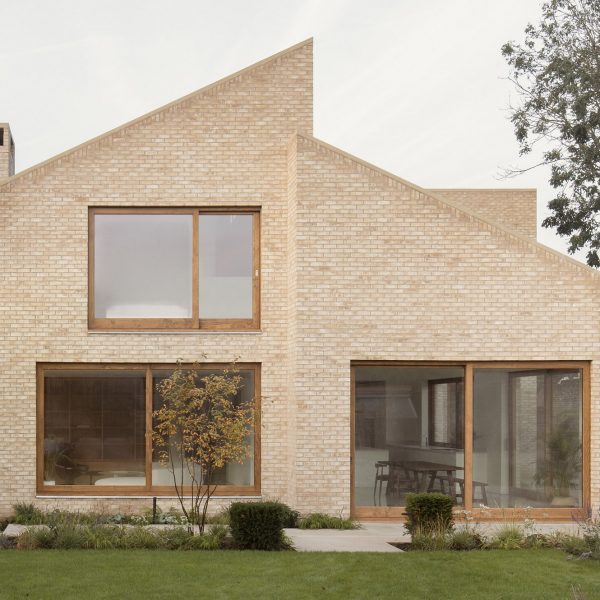London studio Erbar Mattes has completed a timber-framed house in Wimbledon that is formed of three mono-pitched structures unified by buff-brick cladding.
Erbar Mattes was tasked with creating a modern four-bedroom family with the same footprint as a bungalow that previously occupied the site at the end of a street in the former Belvedere Estate.
It is broken into three blocks with vaulted roofs, double-height spaces and strategically placed windows, which the studio said is designed to create an “expansive feel within an otherwise compact footprint”.
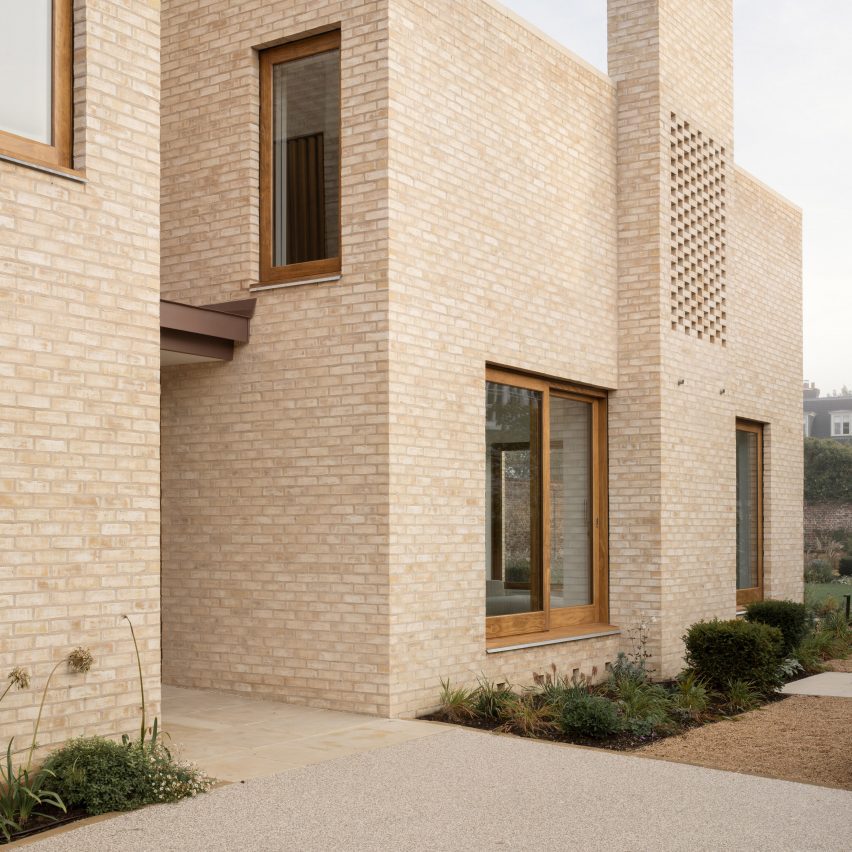
“The house draws its richness from a diversity of scale, light and views,” Erbar Mattes told Dezeen.
“The client’s existing house had very low ceiling heights so we started exploring ways of creating generous rooms while maintaining the building’s footprint compact and away from the neighbours” it continued.
“Enlarging the building footprint would have reduced the size of the garden, so rather than expanding horizontally, the house maximises efficiencies in plan.”
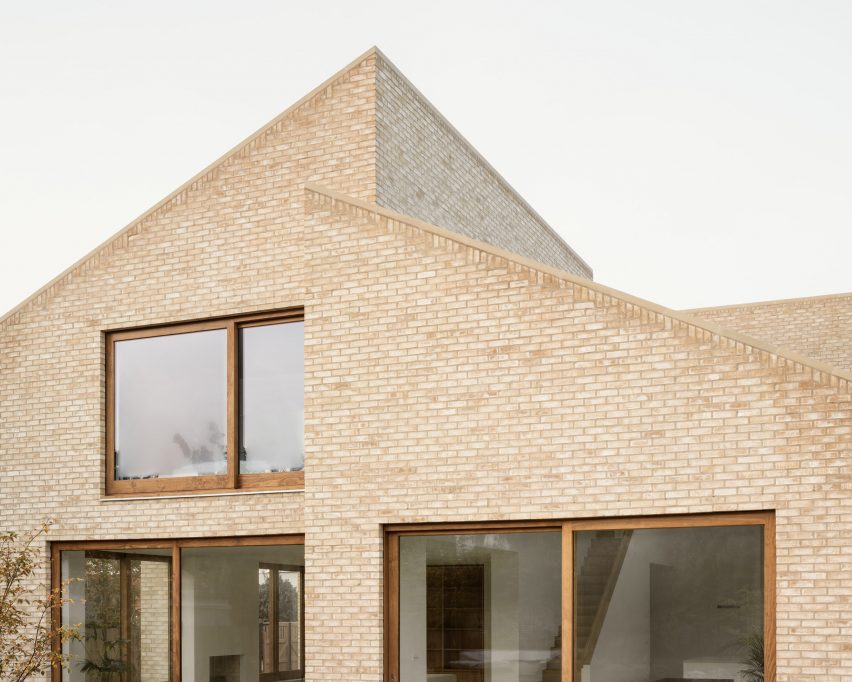
The ground floor of the Wimbledon home is defined by open-plan social spaces orientated towards the garden, prioritising views of the landscape.
A “hall-like”, double-height open-plan kitchen and dining area features picture windows and large skylights to flood the space with natural light.
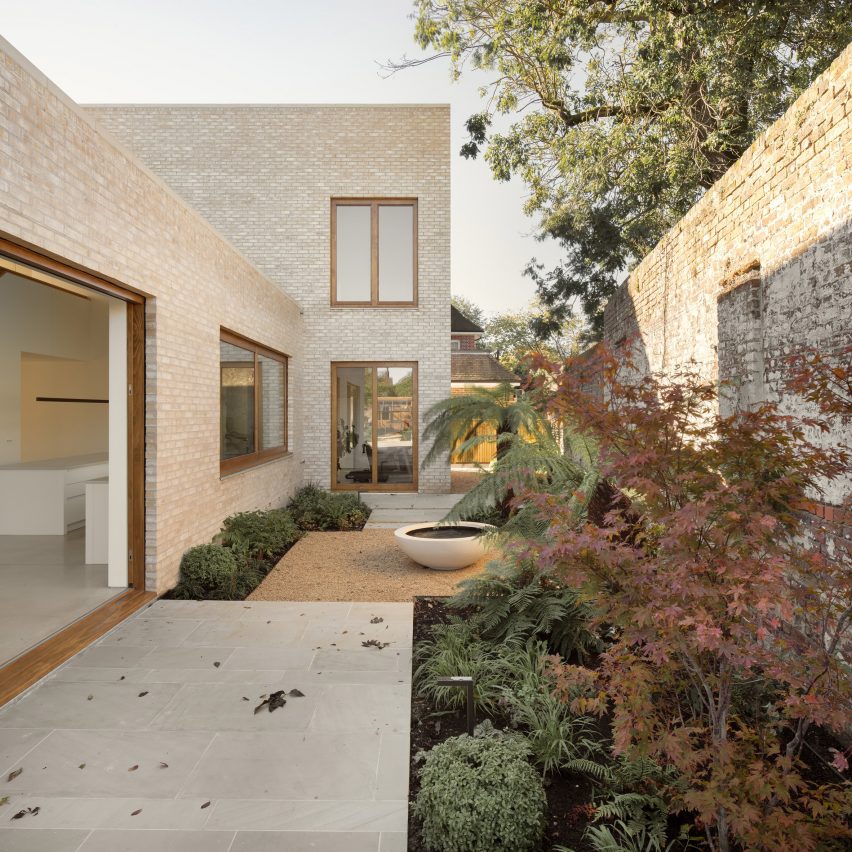
Above is the main bedroom suite, which overlooks the family living room via a balcony window and sliding privacy screen.
The block at the southwest of the site has three en-suite bedrooms on the first floor, while the ground floor is given over to storage, a utility room and a home office.
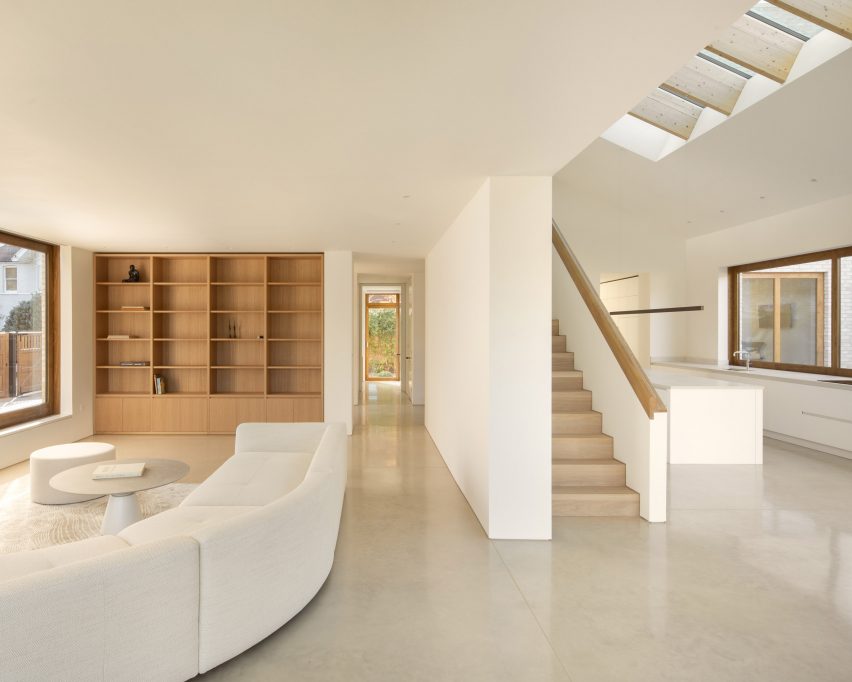
Using the boundary wall from the Belvedere Estate that abuts the home, the studio created an intimate courtyard on one side, accessible via timber-framed sliding glass doors.
Conscious of the surrounding vernacular context, the studio experimented with massing options through model making.
“The house has two neighbours: a larger neo-Georgian house and an original period house of smaller scale,” explained the studio’s director Demian Erbar.
“We were searching for a solution that would mediate between the two by breaking down the mass of the building,” Erbar continued.
“Maintaining a monolithic appearance towards the street in keeping with its historic context, we proposed an intimate character for the upper floor, and punctured a few larger openings in the ground floor social spaces which benefit from the views and connection to the garden.”
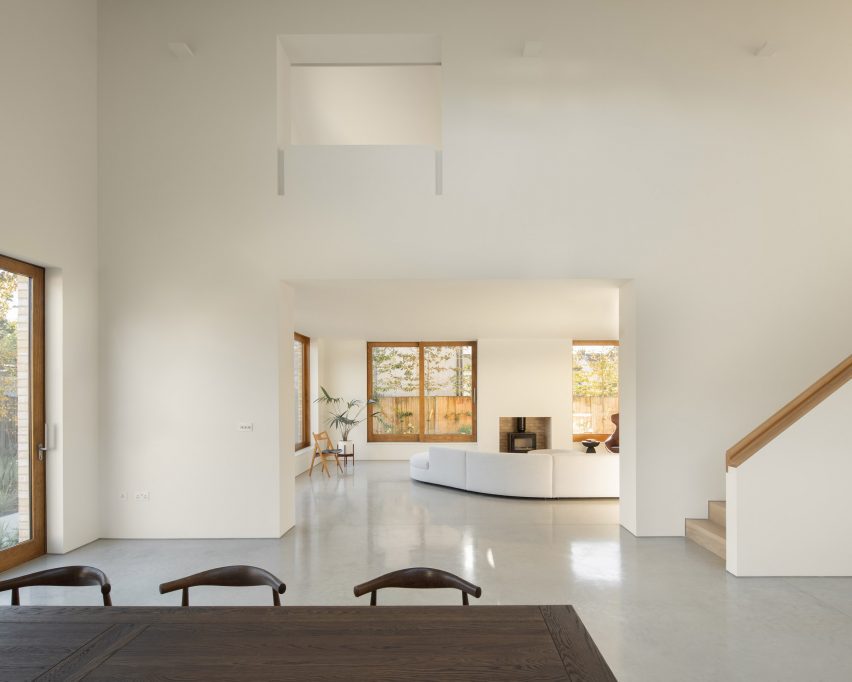
A pale buff-coloured brick facade wraps the three blocks together, finished with traditional flush lime mortar pointing and stone copings.
Internally, the whitewashed walls, ceilings, and polished concrete floor are paired with the warm tones of Accoya window frames and light oak joinery to create a “calm and neutral setting”.
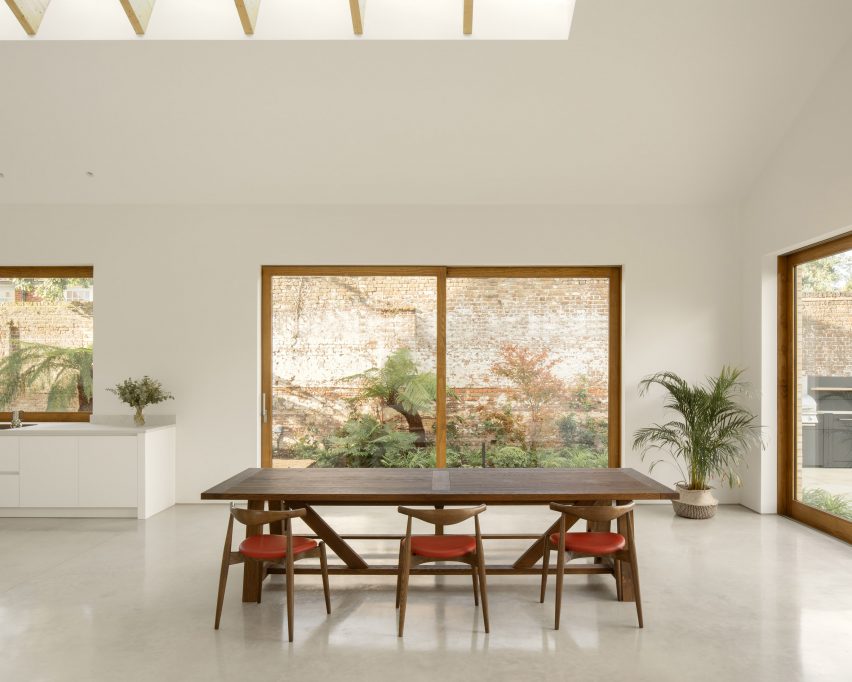
Completing the project is a ground-source heat pump and whole-house heat recovery ventilation system, designed to reduce the design’s operational carbon emissions and running costs.
Erbar Mattes was founded in 2015 by Erbar with Holger Mattes. Elsewhere, the studio recently overhauled a pair of duplex apartments in a former pub and added a limewashed brick and glass extension to an Edwardian house.
The photography is by Ståle Eriksen.

